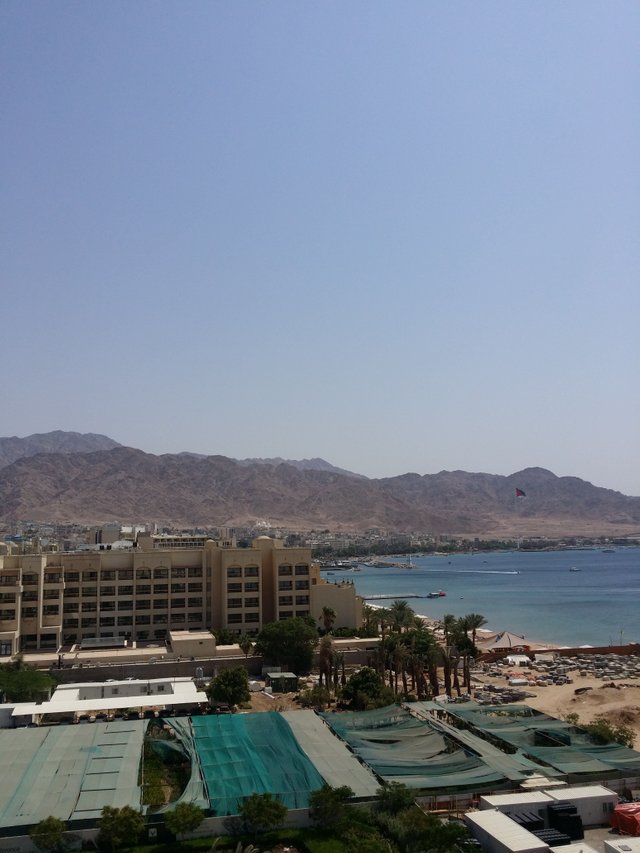




Aqaba is a city located in the far south of the Hashemite Kingdom of Jordan on the Red Sea coast, the center of the province of Aqaba. About 330 kilometers south of Amman. [4] Its population in 2015 was 148,398, the fifth largest city in the Kingdom. [3]
The city of Aqaba is strategically located and the only maritime port of Jordan. It has a border with the city of Qahl in Saudi Arabia via the Durra border crossing, Egypt, [5] and also with the city of Eilat via the Wadi Araba crossing, both of which are located at the top of the Gulf of Aqaba. Aqaba is known for diving and its beaches overlooking the Red Sea.
The city has many important industrial facilities, free trade zones and King Hussein International Airport. It is an important administrative center in the southernmost region of Jordan.
4000 years ago, Aqaba was home to many peoples because of its strategic location on the sea and at the crossroads of Asia, Africa and Europe. Was one of the most important Nabatean cities that expanded and settled in the area. It was a transit point for international trade routes, through which the convoys from the Hijaz and the south of the Arabian Peninsula return to Egypt or the Levant.
The Greeks called it Bernese and the Romans called it Ella or Elena. During the Roman period, the Vianoviriana road was heading south from Damascus to Amman, ending in Aqaba, and from there it was connected to the road heading west to Palestine and Egypt.
After the reign of the Prophet Muhammad peace be upon him became Aqaba under Islamic rule and then transferred ownership among many of the ruling dynasties such as the Umayyad, Abbasids, Fatimids and Mamluks. [12] During the twelfth century AD, the Crusaders occupied the area and built a castle that is still preserved. In addition to building the fortress, they fortified an island that now follows the Egyptian territorial waters and is seven kilometers from Aqaba and is called the island of Pharaoh. [13]
In 1170, Saladin regained the city of Aqaba and the island of Pharaoh. And then seized by the Mamluks in 1250 and built a fort in the fourteenth century in the era of their last rulers, Gansoh Ghuri.
By the beginning of the 16th century, the region was under Ottoman influence. During their rule, Aqaba began to lose its importance and became a small fishing village. Aqaba is the most beautiful city in Jordan
During the First World War, the Ottoman forces were forced to leave the village by the Arab forces under the leadership of Sharif al-Husayn ibn Ali in 1917 as the obstacle to his kingdom in Hijaz, which led to the opening of the lines of support coming from Egypt to the British and Arab forces in Jordan and Palestine.
In 1965, Jordan and Saudi Arabia agreed that Saudi Arabia would take 6000 km of the internal desert land of Jordan for 12 km on the coast in the area near Aqaba.